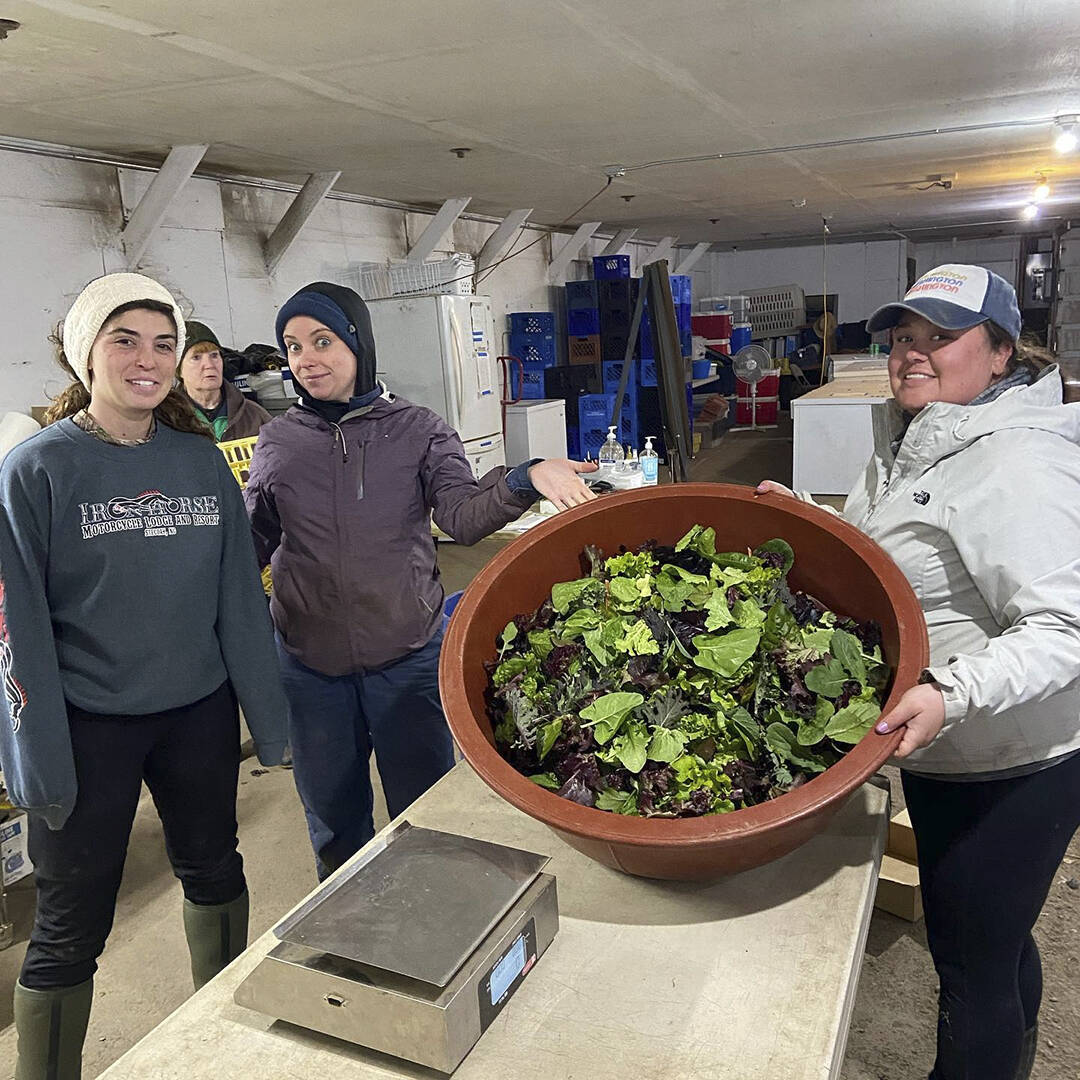An unseasonably cold spring may have far-reaching impacts within Whidbey’s farming community, though farmers are hopeful island residents will still be able to get all the local produce they typically enjoy at some point this season.
The average temperature in Coupeville this April was 45.7 degrees, a full three degrees colder than the 10-year April average for the same area, according to data from the Washington State University Extension of Island County.
So far, this May is also shaping up to be one of the chilliest the island has seen in years. As of Wednesday, the average temperature in Coupeville this month has been 48.9 degrees. According to Island County Extension data, Coupeville’s average temperature in May has hovered around 54 degrees in recent years.
Farmers and gardeners across the island have reported that the cold weather has been reflected in their crops, many of which are much smaller than is typical for this time of year.
At Bell’s Farm west of Coupeville, farmer Kyle Flack said, many crops have been struggling. With only one greenhouse, the farm does not have the space to keep all of the starter crops out of the cold for long. Some plants, such as cucumbers, have had to go in the ground, and Flack said he is not sure yet how they will fare.
The farm’s signature strawberries, too, “are not happy,” Flack said. The plants are healthy and blooming, but very small, and Flack is not sure yet what that will mean for the fruits they produce. The strawberries themselves might be smaller than usual, too, or the plants might simply produce fewer strawberries than in past years.
The cold will impact the farm’s revenues, Flack said, adding the farm will not be able to produce some of its regular vegetables, such as field tomatoes and peppers, at all this year.
At Case Farm in Oak Harbor, where tomato plants make up the bulk of spring sales, the season has also been off to a slow start because of the cold spell.
“They have been significantly delayed,” said farmer Sheila Case-Smith of the tomato plants. “They’ve grown very slowly.”
Though tomato plant sales at Case Farm typically begin at the end of April, Case-Smith said this year, she’s encouraging people to hold off until the island warms up.
She and the rest of the Case Farm crew have been heeding their own advice by waiting to plant certain crops that thrive in warmer weather.
“Normally by now we’d have our corn going, and we haven’t put a seed in the ground,” she said.
Case Farm and Bell’s Farm aren’t alone. Shannon Bly, coordinator of the Whidbey Island Grown Cooperative, said vegetable and flower farmers from all over Whidbey, as well as those on the mainland, are having similar experiences. She knows of at least one farmer whose cucumbers have died despite being planted at a normal time.
She expects a wide variety and abundance of local produce will still be available for Whidbey residents, though vegetables might not be ready until later in the year than usual.
Still, the chill has come with some perks. Whidbey’s grass, which is accustomed to growing in cold weather, has flourished, producing abundant hay crops to feed animals, some farmers reported.
Farmers also said that cool-weather crops, such as broccoli, cauliflower, spinach and kale, are thriving at Whidbey’s depressed temperatures, though other weather conditions still create some impediments.
“The temperatures they would love,” Flack said about Bell’s Farm’s crop of leafy greens, “but the wind has just been beating them up.”
The chilly spring has been augmented by gusty conditions. While aggressive winds are nothing new to Whidbey, they can still pose problems for young plants trying to grow. The National Weather Service in Seattle reported Wednesday that Whidbey’s winds were among the strongest in the region, with speeds reaching 51 miles per hour that morning.
The difficulties island farmers are facing may be replicated in miniature in the yards of Whidbey’s many gardeners. Master Gardener Loren Imes encouraged gardeners to wait a little longer before putting their plants in the ground, especially plants such as tomatoes, corn and cucumbers that prefer warmer conditions.
“We recommend that people don’t be in such a rush, even in normal years,” he said, noting that some gardeners jump the gun on planting in their excitement for springtime.
Gardeners might also try identifying micro-climates within their own gardens, he said. Warm-weather plants might fare better in a sunny spot against a south-facing wall, for example.
As of Thursday, forecasts predicted Whidbey temperatures would trend upward in the coming week, with Oak Harbor and Coupeville hovering around 60 degrees and Langley even reaching 65 degrees. But however the weather changes, farmers will continue to do what they do best: adapt.
Whidbey farmers spoke of the cold spell with an air of acceptance. While the chill is certainly a hurdle to surmount, navigating unpredictable weather simply comes with the territory. As Bly put it, “There’s always something.”
Farmers are “ever hopeful about planting and enjoy being outdoors,” Imes said. “If plants don’t grow well this year, there’s always next year.”



